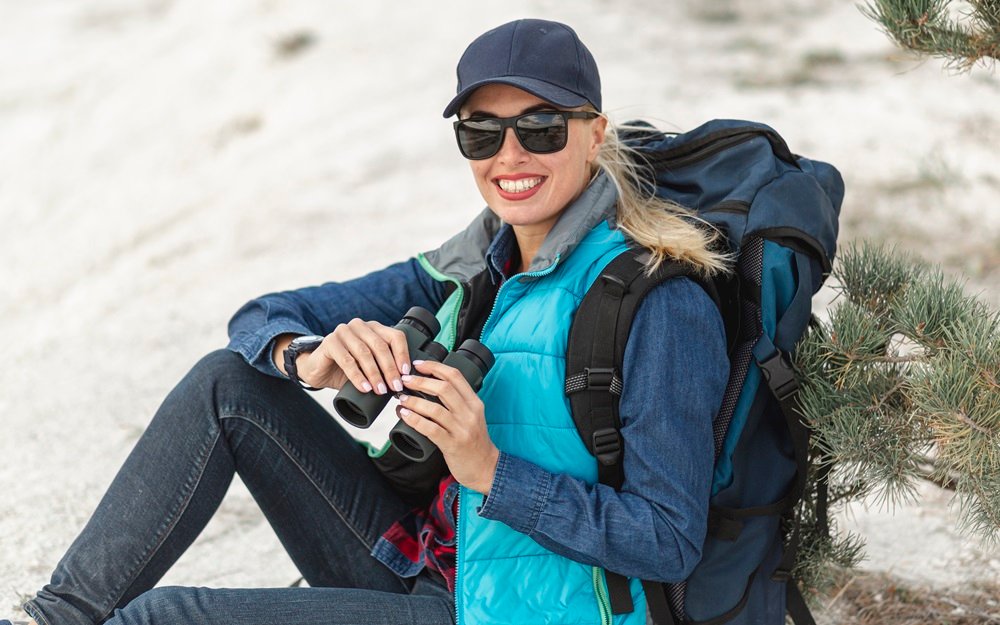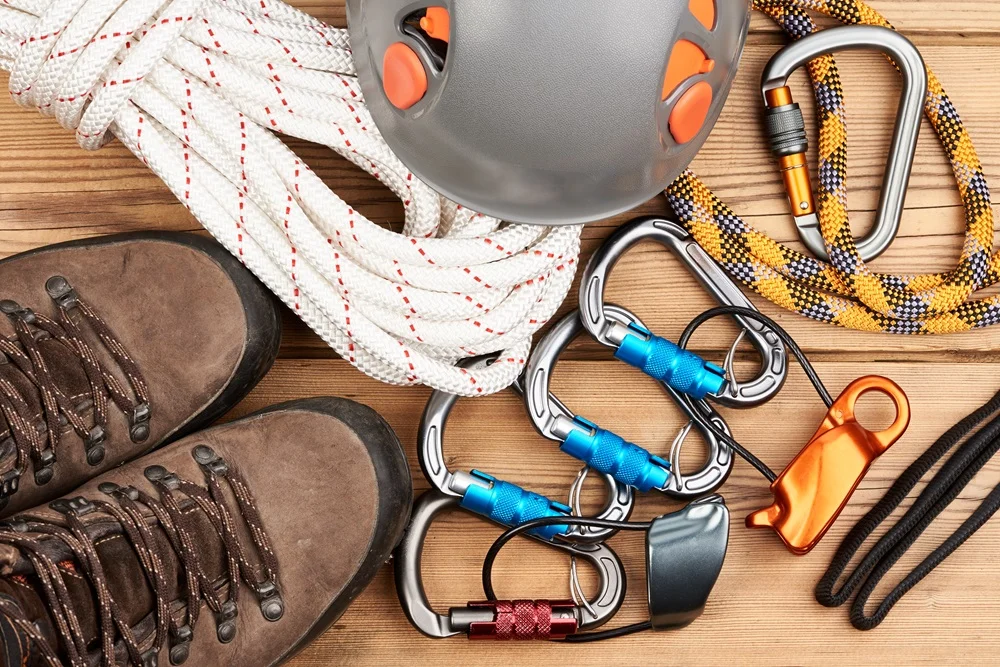You love getting outside, but outdoor gear prices make your wallet cry. Here’s the reality: Americans spend an average of $1,445 annually on clothes and shoes, but smart shopping during events like a patagonia sale womens can help you build a functional outdoor wardrobe for much less.
Start with the Numbers
Before you buy anything, you need to know what you’re working with. American women spend about $2,000 per year on clothing, but outdoor enthusiasts often need specialized gear that costs more than regular clothes.
Here’s what building an outdoor wardrobe actually costs:
| Item Category | Budget Range | Premium Range |
| Base layers (3 pieces) | $60-$120 | $150-$300 |
| Insulation layers (2 pieces) | $80-$160 | $200-$400 |
| Outer shells (2 pieces) | $100-$200 | $300-$600 |
| Hiking pants/shorts (3 pieces) | $90-$180 | $200-$450 |
| Footwear (2 pairs) | $120-$240 | $300-$500 |
| Total | $450-$900 | $1,150-$2,250 |
You can build a solid outdoor wardrobe for under $900 if you shop smart and focus on versatile pieces that work in multiple situations.
Focus on Multi-Use Pieces First
The key to budget outdoor clothing is buying pieces that work both on trails and in everyday life.
As one outdoor enthusiast noted about her fleece jacket: “I actually wear mine on and off the trail since it’s so comfortable, and it goes with everything from jeans to leggings.”
Your foundation should include:
Start with synthetic base layers instead of merino wool. One budget-conscious hiker explained: “I didn’t get the wool base layers since they were at least $30 more per piece, and I was looking to build a hiking wardrobe without breaking the budget.” Synthetic materials dry quickly and cost significantly less while still keeping you comfortable.
A mid-weight fleece jacket serves as both outdoor gear and casual wear. You can throw it over a tank top for morning hikes or wear it to the grocery store. Look for brands that offer colorful designs if you want pieces that transition easily from trail to town.
Hiking leggings double as workout gear and casual pants. Choose ones with pockets and you’ll reach for them constantly. Quality hiking leggings from budget brands cost $30-50 compared to $80-120 for premium versions.
Master the Timing of Sales
End-of-season sales offer the biggest savings. Outdoor retailers typically clear inventory in March (winter gear) and September (summer gear). You can save 40-70% by buying next year’s gear during these clearance periods.
Nearly half of shoppers only buy clothes when they’re on sale, and this strategy works especially well for outdoor gear since styles don’t change dramatically year to year.
Black Friday and holiday sales often include outdoor gear, but the selection is usually limited. End-of-season sales offer better variety and deeper discounts.
Mid-week online sales happen more often than you think. Many outdoor retailers offer Wednesday specials or flash sales throughout the year.
Shop Used and Off-Season
The outdoor community takes care of their gear, making secondhand shopping a goldmine for budget-conscious adventurers.
While most Americans buy primarily new clothes, savvy outdoor enthusiasts know that used gear offers incredible value.
Used gear sources that actually work:
Online marketplaces like ThredUp sell name-brand outdoor clothing at 50-90% off retail prices. You can find barely-worn pieces from premium brands for the price of budget new items.
Local outdoor gear swaps and consignment shops often have hidden gems. Many outdoor enthusiasts upgrade their gear regularly, creating opportunities for budget shoppers.
Manufacturer outlet stores and online outlet sections offer last season’s gear at significant discounts. The performance differences between this year’s model and last year’s are usually minimal.
Build Your Layering System
Outdoor clothing works on a three-layer system. Understanding this helps you buy fewer pieces that work together instead of random items that don’t coordinate.
Your base layer manages moisture next to your skin. Look for synthetic materials in long-sleeve and short-sleeve options. Two pieces cover most conditions.
Your insulation layer provides warmth. A fleece jacket or lightweight down vest handles most situations. You can choose a hooded jacket or one without, depending on your personal preference.
Your outer layer protects against wind and rain. A packable rain jacket covers emergencies, while a softshell jacket works for daily wear and light weather protection.
Prioritize Key Investment Pieces
Some items are worth spending more money on because they dramatically affect your comfort and safety outdoors. Good hiking boots and a quality rain jacket should get the biggest portion of your budget.
As one experienced hiker puts it: “Not all socks are created equal. And when you’re hiking, your feet need to be pampered.” Invest in 3-4 pairs of quality hiking socks. They prevent blisters and last for years.
A well-fitting sports bra designed for outdoor activities makes every adventure more comfortable. Spending $40-60 on one excellent sports bra beats buying three cheap ones that don’t provide proper support.
Make Your Wardrobe Work Harder
Color coordination maximizes outfit combinations. Stick to a palette of 2-3 colors so everything mixes and matches. Neutrals like black, gray, and navy work with accent colors like teal or purple.
Research shows that people only wear about 20% of their closets. Avoid this trap by choosing pieces you genuinely love and that serve multiple purposes.
Accessories extend your wardrobe’s functionality. A good hat works for sun protection and warmth. A lightweight scarf can be a headband, neck warmer, or emergency bandage.

The Reality Check
Building an outdoor wardrobe on a budget requires patience and strategic shopping. You won’t get everything at once, and that’s okay.
Most wardrobe building takes about a year, as it’s easiest to shop for items when you’re in that season and can properly assess your needs.
Start with the basics that address your most frequent outdoor activities. Add specialized pieces as your interests and budget allow.
Remember that expensive gear doesn’t automatically make you a better outdoor enthusiast—comfort, safety, and confidence do.
Frequently Asked Questions
Can I build a complete outdoor wardrobe for under $1,000?
Yes. By shopping smart—especially during sales like the Patagonia sale womens—and focusing on versatile, multi-use pieces, you can build a quality outdoor wardrobe for $450–$900.
What’s the best time to find Patagonia women’s gear on sale?
End-of-season sales are ideal:
- March for winter clearance
- September for summer clearance
Also, look out for Black Friday, mid-week flash sales, and online outlet deals.
What are the essential items I should start with?
Start with:
- Synthetic base layers (cheaper and quick-drying)
- Mid-weight fleece jacket (trail to town versatility)
- Hiking leggings with pockets
These cover multiple activities and conditions while staying affordable.
Is it better to buy merino wool or synthetic base layers?
For budget shoppers, synthetic is the better choice. It dries fast and costs significantly less—perfect for building your base wardrobe affordably.
Where can I find used Patagonia gear that’s still in great shape?
- Online: ThredUp, Poshmark, Geartrade
- Offline: Local gear swaps, outdoor consignment shops
- Outlets: Patagonia’s online and retail outlet stores
These sources often have lightly used or last-season gear at 50–90% off.
What pieces should I spend more on?
Prioritize spending on:
- Hiking boots
- Rain jacket
- High-quality socks
- Supportive sports bra
These directly affect comfort, safety, and performance.
How do I build a wardrobe that mixes and matches?
Stick to a 2–3 color palette (e.g., black, gray, teal) to ensure all pieces layer well together. This maximizes outfit combinations without needing more items.How long will it take to build my outdoor wardrobe?
Expect it to take about a year, buying pieces by season and gradually assessing what you need most for your specific activities and locations.








